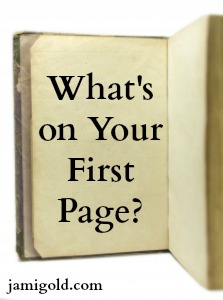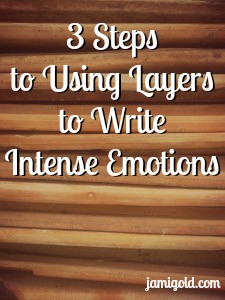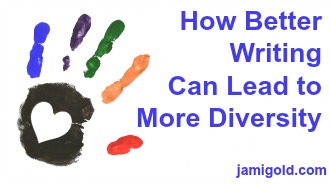In the real world, the cause of something happens before the effect. But in writing, we can put words into any order we want, which might leave the reader confused. If they have to reverse events in their head, they’re probably no longer immersed in our story. Not good.
Pin It
Read More
The ability to manipulate our readers’ emotions is a good thing (as screwed up as that sounds). Storytelling and keeping readers’ interest often comes down to creating emotions in our readers. So let’s take a closer look at how we create emotions in our readers and how we find the right balance.
Pin It
Read More
Many stories “strike out” with readers in the first chapter. So our opening pages are just as critical to sales as our book cover, title, back-cover blurb, etc. Let’s take a closer look at cliches to avoid and tips to make those pages work for us.
Pin It
Read More
A “numb” reaction isn’t unusual for dark or deep emotions. In fact, it’s probably fairly normal. But it makes writing the scene more difficult. How do we show numb and deep emotions at the same time? How can readers connect to an emotionless character?
Pin It
Read More
How many hundreds of times have we all heard the advice to “show not tell”? That’s often good advice (except for the times when it’s not *smile*). Other than the exceptions, “showing” usually is better than telling because it pulls the reader deeper into the story. But that means we […]
Pin It
Read More
The push for diversity isn’t about valuing diversity over storytelling. Or about meeting a quota. Or making a statement. This is about being a better writer.
Pin It
Read More
Many writers will search in MS Word for red flag words that indicate telling. But there are a lot of those words, and that would be a lot of searches. That’s where macros can help, and today we’ll learn how to build our own trouble-searching macros with a few secret weapons.
Pin It
Read More
We want to clean up our story the best we can because copy editors often charge a “messy manuscript” premium. Yet it can be difficult to self-edit at this “polish” stage. For one thing, this step can be tedious to the extreme. Even with MS Word’s “find and replace” functionality, there are many words to check, and it’s hard to remember them all.
Pin It
Read More
I was going to rant about poor editing today, but I closed the wrong window in my computer and lost all 1000 words. *sigh* So I’ll try it again later when I’m not so sleep deprived from WANACon preparation. Instead, I’m revisiting a different topic today. We’ve heard the saying: Life […]
Pin It
Read More
Last week, we looked at turning points from the perspective of beat sheets—how to identify them and ensure they’re changing the direction of the story enough to deserve their name. But turning points affect the story in other ways too. Turning points aren’t just about plot twists. (In fact, plot […]
Pin It
Read More










